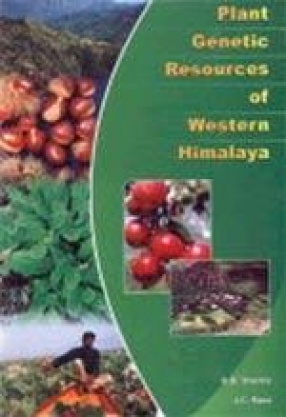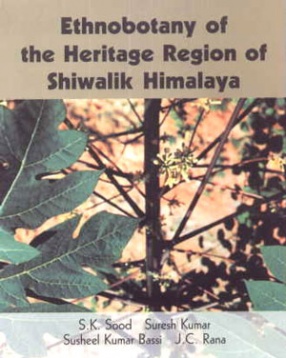Plant Genetic Resources of Western Himalayas: Status and Prospects
Synopsis
The significance of Plant Genetic Resources (PGRs) is on top of agenda of all those who are concerned with food, nutritional and environmental security. The book is an attempt to put a wealth of information on PGRs of Western Himalayas, viz., (i) Man-made ecosystems-agro-biodiversity and natural ecosystems as store houses of medicinal and aromatic plants, less known edible plants, cottage industrial plants, flowers and wild relatives of crop plants as well as other related issues such as genetic erosion, bioprospecting, biodiversity hot spots, biopyracy, planning PGR for food prosperity and PGR activities in the region. The uniqueness about this book is the vivid description of various crops under cultivation, landraces and varieties in vogue in W. Himalayan states-Himachal Pradesh, Jammu and Kashmir and Uttaranchal. The chapter on introduction gives an account of biodiversity status (both natural-and agro-) in three states (J&K, H.P. & Uttaranchal) under existing ecological conditions, need of their utilization for the food security and economic prosperity. Plant Genetic Resources (chapter 2) in H.P., J&K and Uttaranchal States include crop species of cereals, pseudocereals, millets, legumes, oil seeds, fibre plants, vegetables, spices and condiments, fruits and nuts and their wild relatives occurring in W. Himalayas. Lesser known edible plant species are given in chapter 3. This group of plants are excellent food and nutritional supplements and are silent cures of many ailments that may impair health in due course. Medicinal and aromatic plants of H.P., J&K and Uttaranchal are mentioned in chapter 4. Chapter 5 describes ornamental plant species occurring naturally, as introduced and various aspects of utilizing this resource as an economic enterprise. A brief account of forest plant genetic resources and their use of various purposes have been described in chapter 6. Diversity hotspots for agri-horticultural crops are described in chapter 7. This also includes diversity hotspots of wild relatives which demand immediate attention of planners and all stake holders for in situ conservation of these areas. Chapter 8 describes current scenario in genetic erosion of agro-biodiversity and of natural plant biodiversity resources along with various related aspects including aspirations of various communities. Chapter 9 gives a detailed account of all PGRs requiring bioprospecting where there may be dangers of biopyracy under the current scenario of WTO regime. Chapter 10 is very important to all stake holders, planners, political authorities as is describes as to how plant PGRs for food security and economic prosperity of the people of three Himalayan states are to be managed and utilized. Chapter 11 mentioned all initiatives that have undergone on PGR collection, characterization, evaluation and conservation etc. in the past years and also lists various agencies/institutions engaged in this activities related to PGR use and conservation. The book will serve as reference and will provide source material to researchers, teachers, students on all aspects of PGRs.
Read more
67.50
60.75
$
75.00 $
Free delivery Wolrdwidе in 10-18 days
Ships in 2-4 days from New Delhi
Membership for 1 Year $35.00
Get it now and save 10%
Get it now and save 10%
BECOME A MEMBER
Books by the same authors








Bibliographic information
J.C. Rana
Tags